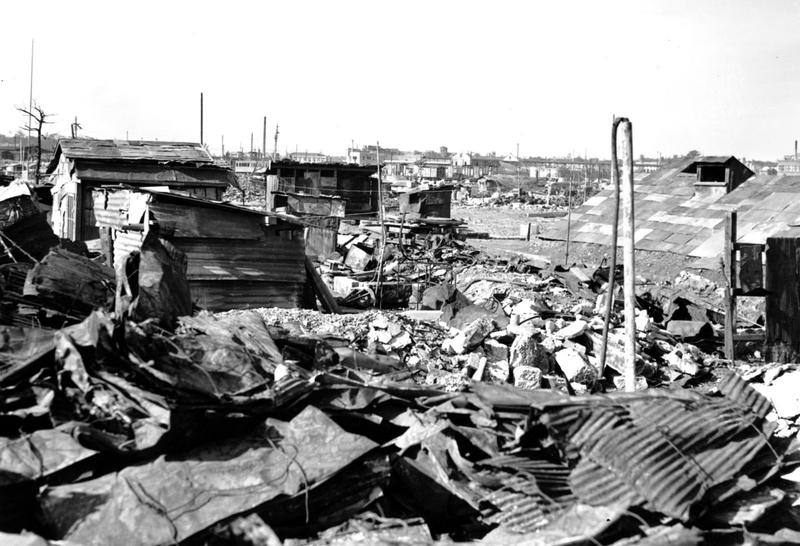Remembering The Firebombing Of Tokyo

Most of us will know the names of Hiroshima, Nagasaki and Dresden, and what those names mean in the history of World War II and the devastation those cities suffered. But the most deadly single night of World War II was somewhere else.
It was 70 years ago this week that 334 U.S. B-29 bombers dropped thousands of tons of incendiary bombs on Tokyo’s crowded wooden neighborhoods. Those bombs started a firestorm that burned at more than 1,000 degrees and killed more than 100,000 people.
It’s an event that dwarfs even the atomic bombing of Hiroshima, but it’s been all but forgotten around the world and even in Japan, as the BBC’s Rupert Wingfield-Hayes reports.
Note: This BBC interview can be heard in the Here & Now podcast or with the WBUR app.
Guest
- Rupert Wingfield-Hayes, Tokyo correspondent for the BBC. He tweets @wingcommander1.
Copyright 2015 NPR. To see more, visit http://www.npr.org/.9(MDEwODYxNTQyMDEzNjAxODk2Nzc2NzNmYQ001))
9(MDEwODYxNTQyMDEzNjAxODk2Nzc2NzNmYQ001))